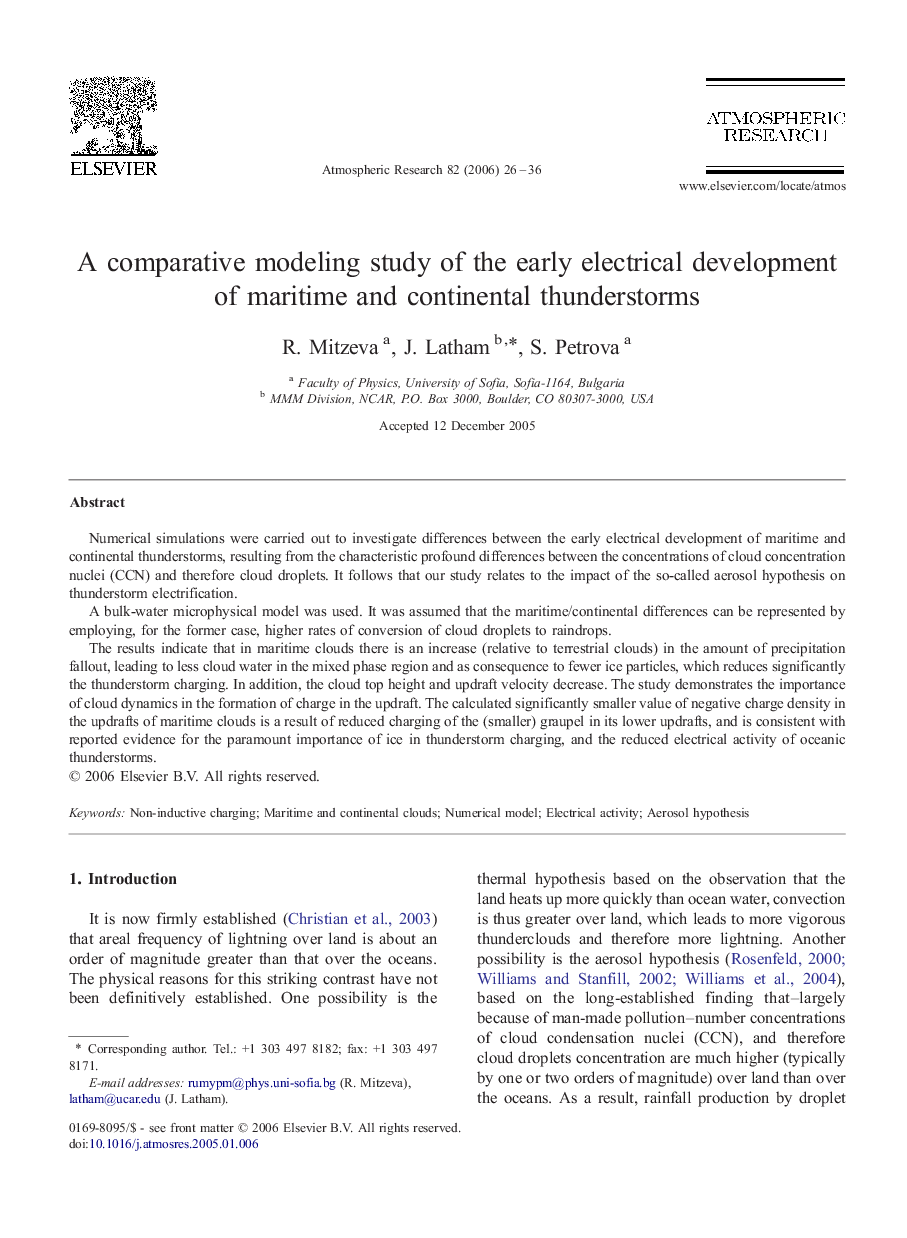| Article ID | Journal | Published Year | Pages | File Type |
|---|---|---|---|---|
| 4451393 | Atmospheric Research | 2006 | 11 Pages |
Numerical simulations were carried out to investigate differences between the early electrical development of maritime and continental thunderstorms, resulting from the characteristic profound differences between the concentrations of cloud concentration nuclei (CCN) and therefore cloud droplets. It follows that our study relates to the impact of the so-called aerosol hypothesis on thunderstorm electrification.A bulk-water microphysical model was used. It was assumed that the maritime/continental differences can be represented by employing, for the former case, higher rates of conversion of cloud droplets to raindrops.The results indicate that in maritime clouds there is an increase (relative to terrestrial clouds) in the amount of precipitation fallout, leading to less cloud water in the mixed phase region and as consequence to fewer ice particles, which reduces significantly the thunderstorm charging. In addition, the cloud top height and updraft velocity decrease. The study demonstrates the importance of cloud dynamics in the formation of charge in the updraft. The calculated significantly smaller value of negative charge density in the updrafts of maritime clouds is a result of reduced charging of the (smaller) graupel in its lower updrafts, and is consistent with reported evidence for the paramount importance of ice in thunderstorm charging, and the reduced electrical activity of oceanic thunderstorms.
